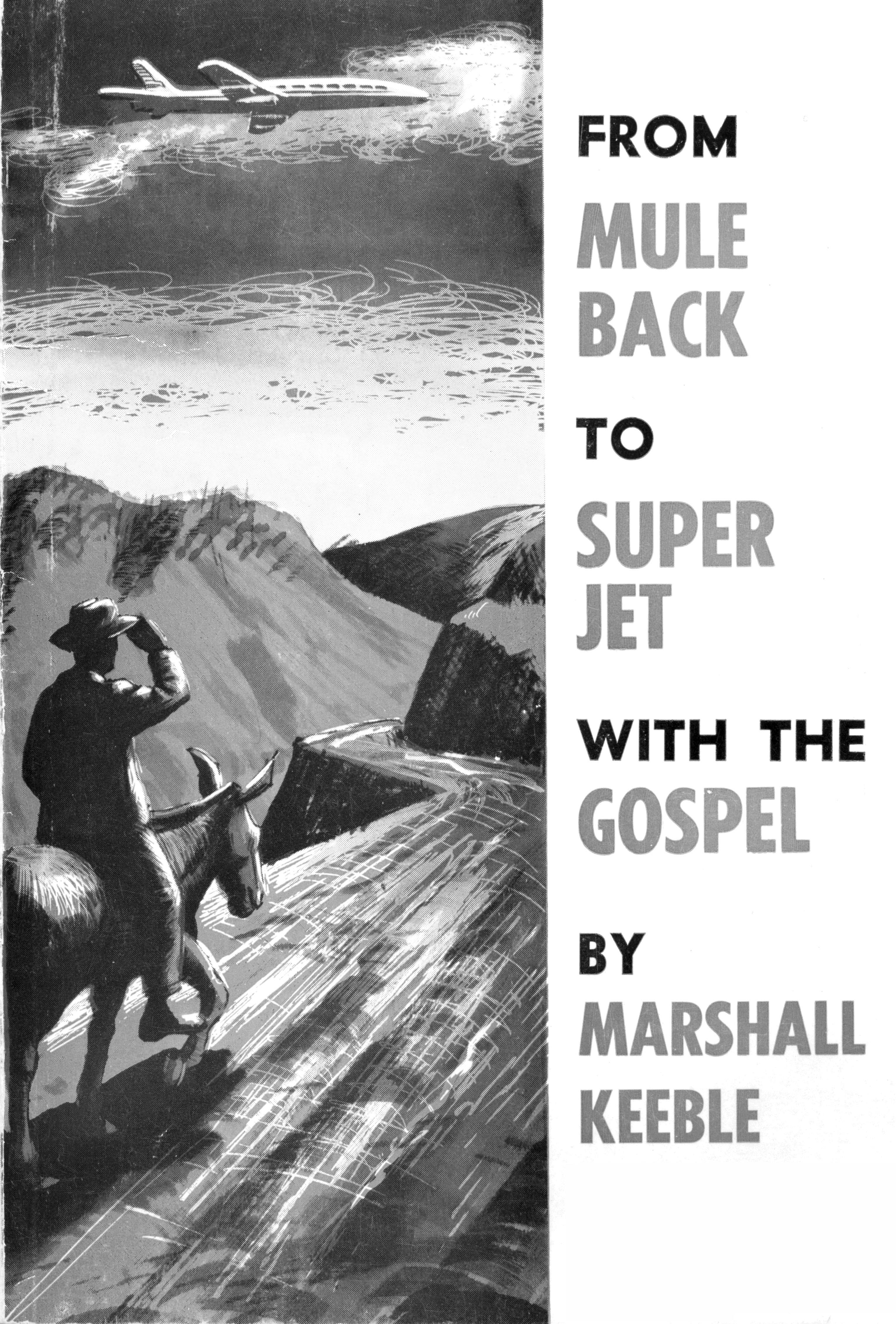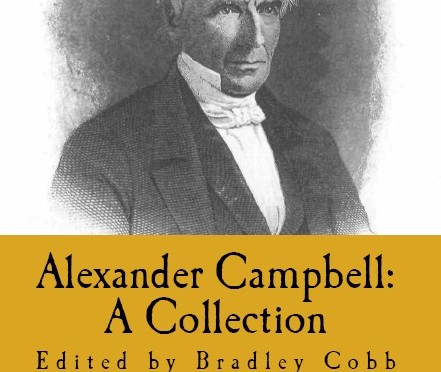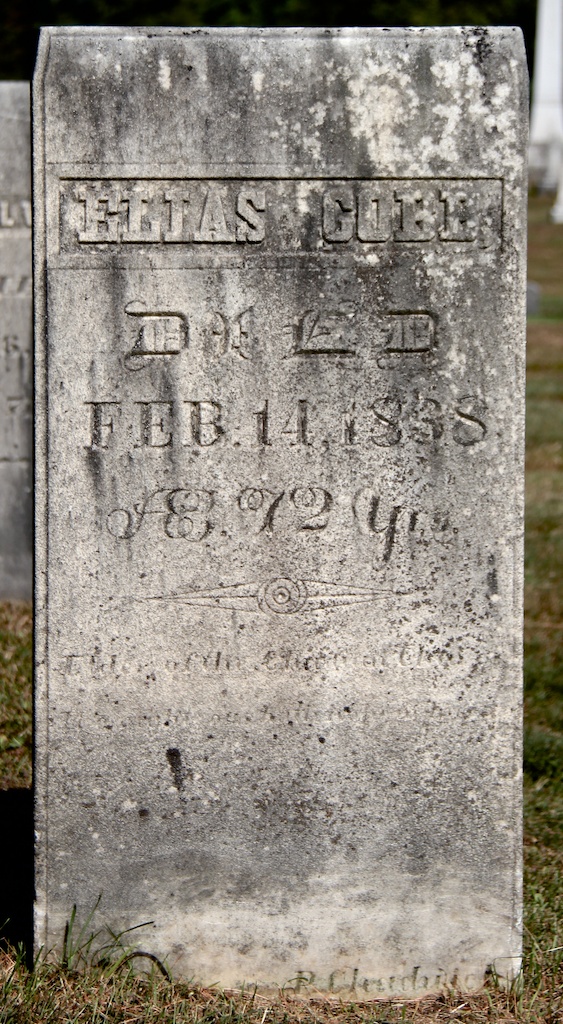From The Millennial Harbinger, Vol. 3, No. 1, 1844 (as republished in Alexander Campbell: A Collection, Volume 2)
This morning being Christmas, and, as the Roman superstition would have it, the nativity of man’s Redeemer; assuming it as true, my thoughts naturally lead me to Bethlehem, Calvary, and the sepulchre of Joseph. And what mysterious, sublime, and animating associations cluster around those three places! How near the point of distance! Eight short miles measured the whole space from the manger to the cross! And how short the interval of time between the first birth from Mary, and the second birth from Joseph’s tomb, of Arimathea! Not quite the half of three-score-years-and-ten completes the labors and the life of Heaven’s and Earth’s First Born! And yet what scenes and transactions crowd this narrow space of earth, and this short interval of time!
Other children, earth’s noblest sons, her proudest benefactors, were born to shed a few scattering rays of science over the benighted mind of man; or to wipe a few tears of sorrow or of anguish from the cheek of human woe; or to rescue man from some heartless tyrant that doomed his victims to abject slavery; or to confer some transient honor on some little circle of kindred friends and favorites. But this blest child of a thousand hopes and promises—this wonderful offspring of Divinity and humanity—this Son of God and Son of Man, was born to be a light of all nations, and of all ages—to scatter night away from all eyes within the realms of mercy—to break forever its dark sceptre and annihilate its power over all his friends and brethren—to dry up the tears of a weeping world by washing away its sins and sorrows in a fountain filled with his own blood—to deliver man from that fiercest of all tyrants, Death; and to bestow honors on a ransomed race, bright as the throne of God and lasting as the ages of eternity.
And how was all this accomplished! Born in a stable—circumcised the eighth day—dedicated on the fortieth, at Jerusalem, in the Temple—persecuted into Egypt—nursed in the land of Ham—brought back to Bethlehem—removed to Nazareth, where he lived subject to his parents till he completed his thirtieth year, living so obscurely, too, as not to be mentioned but once after his return till about the time of his immersion; and at that time he is found in the Temple amongst the teachers, listening to their discourses and propounding to them questions.
After his baptism, commenced his public life. And what a period was that between his two baptisms! Did ever so many deeds of renown, so many demonstrations of divine eloquence, majesty, and power, cluster together in such a bright interval around the person of any son of woman! What temptations and triumphs! What miracles of mercy! What words of grace! What acts of condescension fill up the moments of this brightest epoch of Time’s career! A busier or more active life was never spent. “He went about continually doing good.” What multitudes were instructed, healed, relieved, fed, feasted! How many discourses, both public and private—how many questions answered—how many parables spoken—how many controversies and debates decided—how many triumphs gained—and with what travails, privations, fatigues, exhaustion, fasting, praying, and personal consecration! If all that he did and all that he said had been fully written, the world could neither read nor remember it.
But yet the two greatest victories were not won during his life. He had, indeed, foiled and vanquished Satan. But Death still reigned over all, and the Grave devoured all. The former he killed by dying, and the latter he vanquished by rising out of it and carrying with him its gates and bars up the hill of God.
‘Tis here that immortality lifts its matin*[1] ray over a slumbering world. ‘Tis here, a second time, that light is the offspring of darkness, and from the sorrows of death spring up eternal joys. What a plot! The Prince of Life submits to be killed, that he might destroy him that had the power of death! He is carried into Death’s strong prison, which, till that moment, held secure all that ever entered it. But it was not possible that the Prince of Life could be long held under its sway. Like Samsom with extinguished eyes, he stretched forth his hands to seize the pillars, that he might once more try his strength. The third morning came, and with it his almighty power. It was the operation of God. What a victory! The light of the upper world entered the grave—the shrouds of death were lifted up—and a bright ray gleamed through all the charnel-house. But the dead knew it not. It was consolation to all the living saints. It healed the wounds and dried up the sorrows of six thousand years. It promised a bright day of immortality to all the saints. Its shout of victory was heard by the ear of faith. It echoed through all the regions of the dead—Grave, where now thy victory!
The whole earth is sown with men. Sea and land make but one extended burying ground. What treasures lie hidden in the dust! Diamonds of the richest ray are but ashes compared with the remains of saints incorporated with the soil. What trophies has Death gained in six thousand years! But he will soon be divested of them all. The grave will be left without a tenant before many centuries shall have run their rounds.
But the most pleasing reflection of all is, that all that sleep in Jesus are to be awakened by the noise of his coming. He has many reasons to hasten his return. The earth is yet the receptacle of the bodies of his friends. Its precious mines of precious metals, its richest minerals of every species, with all its varied tenants—its living beauties, vegetable and animal, when summed up fall infinitely short of equaling, in his eyes, the ashes of a Noah, a Daniel, or a Job.
We have many strong pledges of our Savior’s return to this planet, but none that strikes more forcibly so many feelings of our nature than that the earth retains so many of our Lord’s dear kindred, whose ashes are still mingled with its soil. We have not only David’s sepulchre still with us, but those of the grandees*[2] Abel, Noah, Abraham, Isaac, Jacob, Samuel, Daniel, Job—all the Prophets—all the Apostles—all the Saints and all the Martyrs. They are yet with us; and precious is their dust in the eyes of our kinsman Redeemer. Come he will—come he must.
How far my musings have led me from my first design! But now when I think of retracing my steps, the cock’s shrill clarion admonishes me that the hour of worship is near; and here I must lay down my pen for the present.
A. Campbell
[1] The first light of the morning.—Editor.
[2] Men of high importance—Editor.




